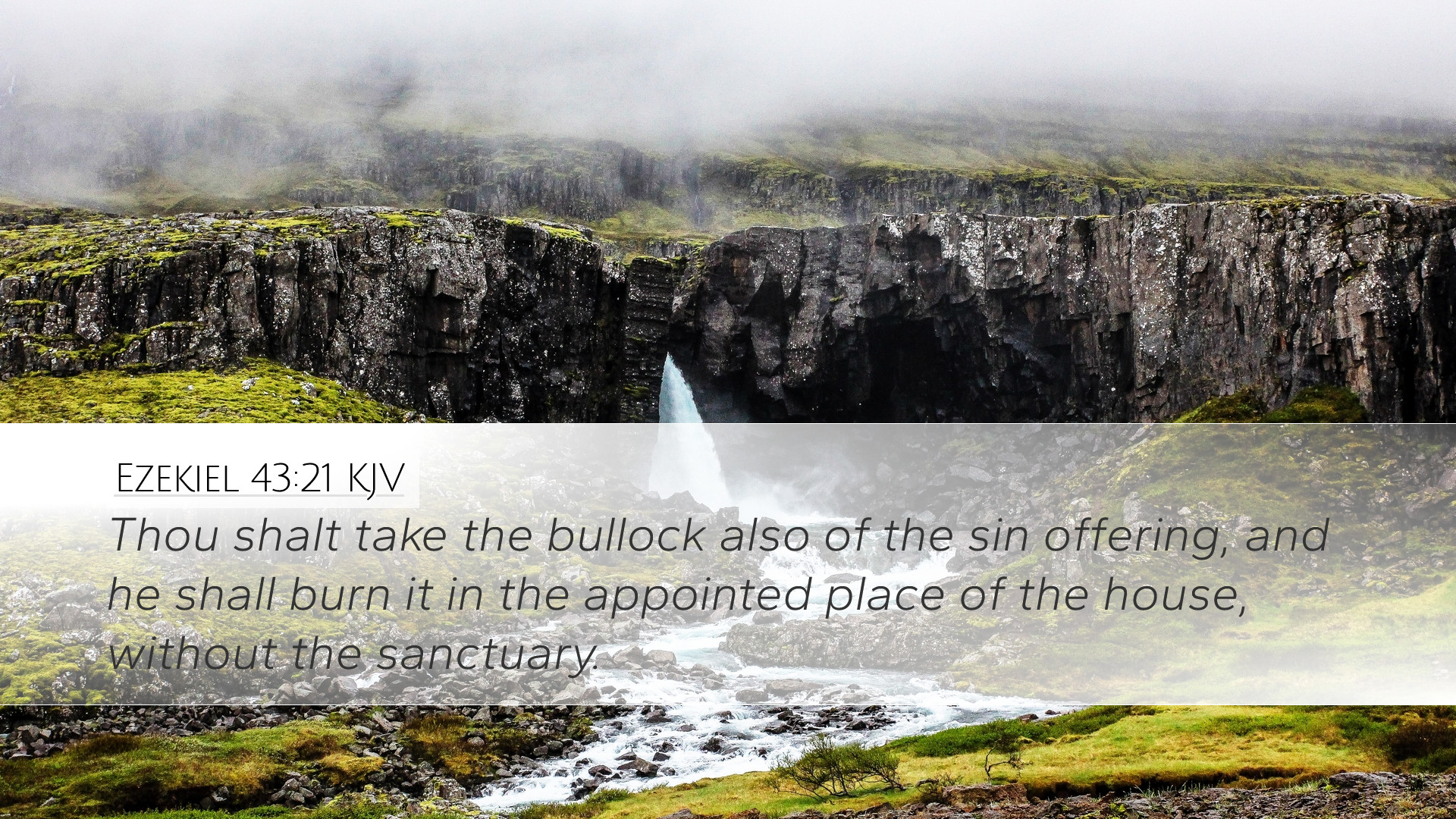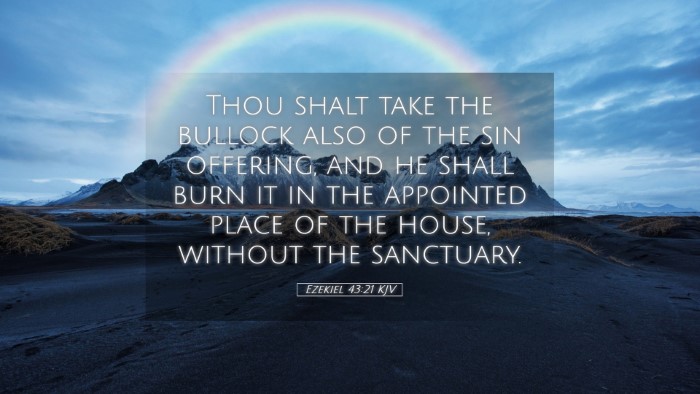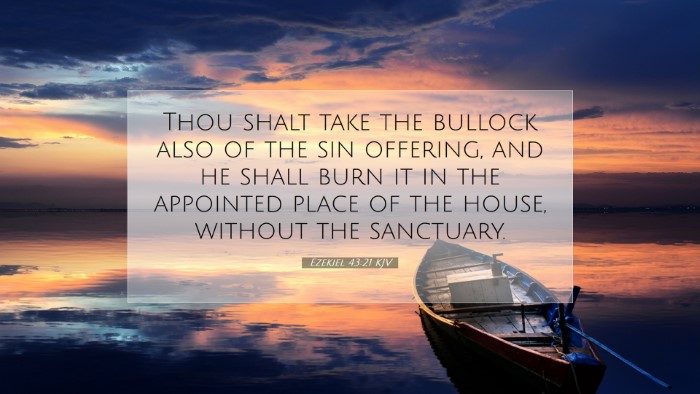Bible Commentary on Ezekiel 43:21
Ezekiel 43:21 states: "And thou shalt take the bullock also, and thou shalt burn it in the holy place for the sin of the people." This verse is part of Ezekiel's vision of the restored temple and outlines the procedures for sacrifices that signify atonement and reconciliation with God.
1. Contextual Background
This verse occurs in a section where Ezekiel is given a detailed vision of a new temple, emphasizing the re-establishment of true worship and holiness. The vision serves as a theological reassurance to the exiled Israelites that God will restore their relationship with Him through sacrificial atonement.
2. Insights from Commentaries
2.1. Matthew Henry's Commentary
Matthew Henry stresses the significance of the sin offering, indicating it demonstrates God’s grace in providing a means of atonement for His people. Henry elaborates on the bullock as a fitting sacrifice, representing not only the physical necessity of sacrifice but also its spiritual implications. The bullock, being the largest of the clean animals, symbolizes the weightiness of sin and the seriousness with which God addresses human disobedience. He notes:
"This offering teaches us the need for a true sacrifice that satisfies divine justice while extending mercy. The choice of a bullock points to God's serious approach to sin and His provision for reconciliation."
2.2. Albert Barnes' Commentary
Albert Barnes provides a detailed exegesis on the role of the sin offering in Ezekiel's vision. He emphasizes the necessity of blood for atonement, referencing Levitical law and stating:
"The blood of the sacrifice serves as a symbol of life and the payment for sin. The act of burning the bullock signifies the complete consumption of the offering by God, reflecting divine acceptance and the totality of the atonement."
Barnes highlights the communal aspect of the atonement process, suggesting that the sacrifice is not just for the individual but for the entire people of Israel, reinforcing the collective responsibility for sin.
2.3. Adam Clarke's Commentary
Adam Clarke provides a more practical interpretation of the sacrificial system. He discusses the significance of burning the bullock in the holy place, emphasizing the fire's use in purification. Clarke notes:
"The fire symbolizes judgment and sanctification. The act of burning serves both as a purification rite and a foreshadowing of the ultimate sacrifice of Christ, who, though not a bullock, takes away the sins of the world."
Clarke further encourages readers to reflect on the implications of such sacrificial acts, pointing out that they should lead to a transformed life in the light of God’s mercy.
3. Theological Implications
The rituals described in Ezekiel 43:21 provide rich theological insights into the nature of sin and atonement. Here are some key implications for pastors, students, theologians, and scholars:
- Holiness of God: The text emphasizes God's holiness and the need for purification. The offering underlines the seriousness of approaching a holy God.
- Atonement and Sacrifice: The necessity of a sin offering illustrates God's plan for redemption, foreshadowing the ultimate sacrifice of Jesus Christ.
- Community Aspect: The communal sacrifice indicates that sin affects the community, prompting collective responsibility in seeking forgiveness.
- Transformative Worship: The vision of the temple points towards the significance of worship in spirit and truth, highlighting a future restoration of right relationship with God.
4. Practical Application
For pastors and leaders, Ezekiel 43:21 serves as a reminder of the importance of teaching about sin and the need for atonement. It encourages congregations to embrace repentance and celebrate the mercy found in Jesus. The sacrificial system teaches that while sin is serious, God’s provision for atonement is readily available, leading to hope and restoration. Here are some specific applications:
- Encouraging Repentance: Use the imagery of the blood sacrifice to invite congregants to confront their sins and seek God's forgiveness.
- Highlighting Jesus' Sacrifice: Draw parallels between Old Testament sacrifices and the New Testament revelation of Christ's atoning work.
- Promoting Community Confession: Foster a culture where communal confession and accountability are practiced, echoing the collective aspect of the offering.
- Leading Transformative Worship: Encourage authentic and transformative worship experiences that reflect the heart of God.
5. Conclusion
Ezekiel 43:21 captures essential truths about the nature of sin, the holiness of God, and the necessity for atonement. By understanding the establishment of such sacrifices, readers can grasp the depth of God’s grace in the plan of salvation that culminated in Christ. As we reflect on this passage, may we appreciate the richness of God's redemptive work and strive for a life that honors His holiness through sincere worship and obedience.


